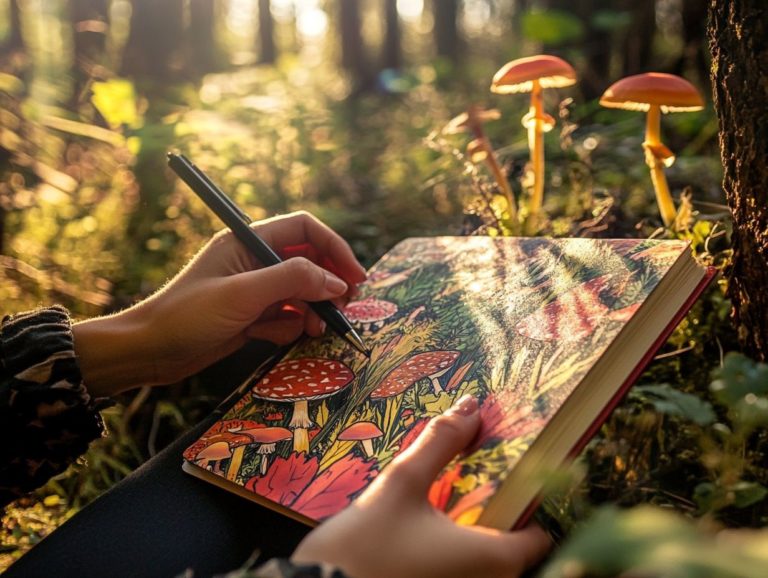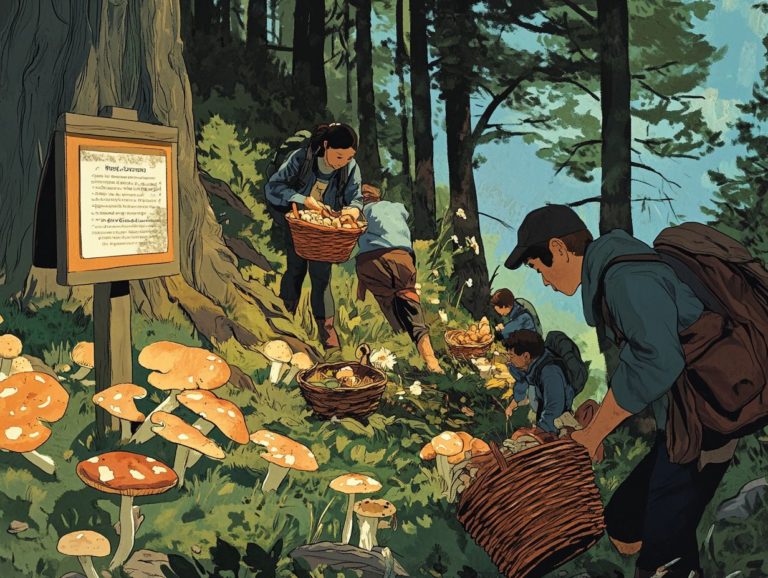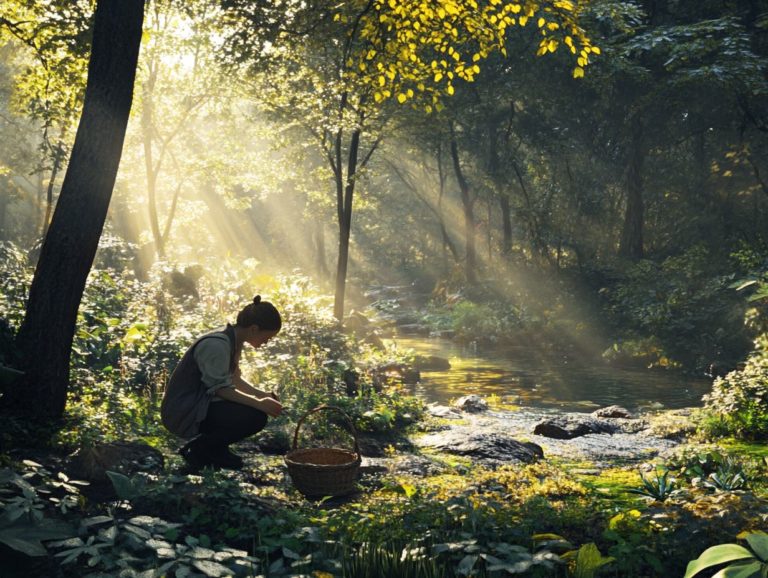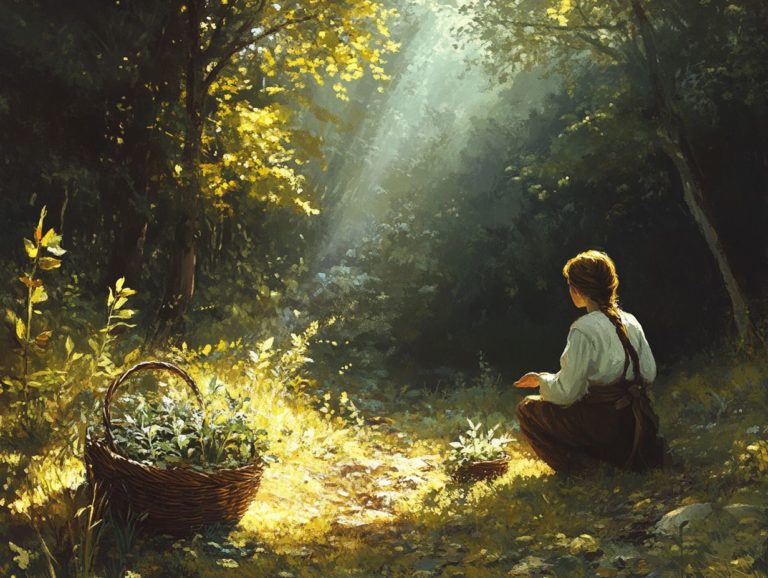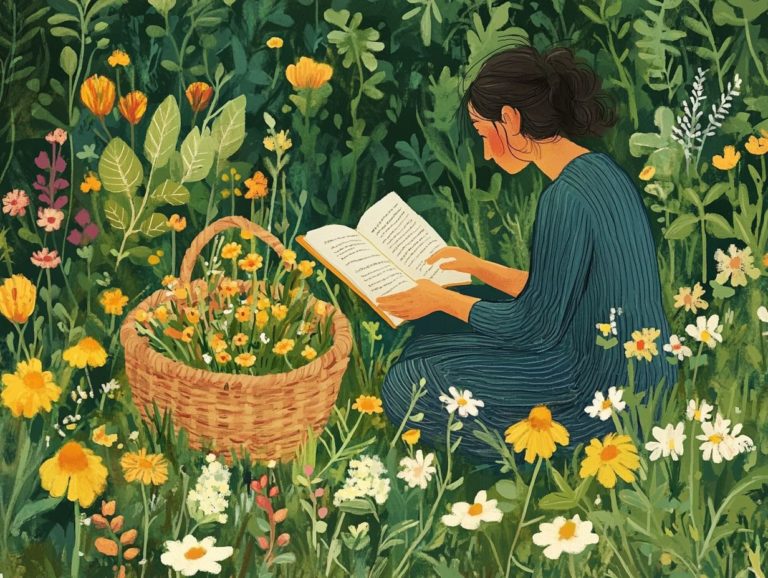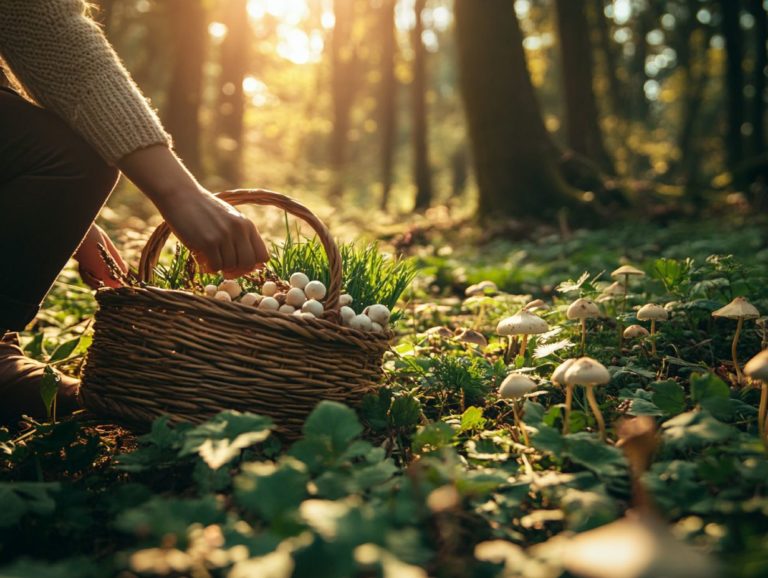Foraging Techniques for Beginners: Key Tips
Foraging transcends mere trendiness; it presents a fulfilling opportunity to deepen your connection with nature and uncover the rich bounty that lies beyond your doorstep.
Whether your interest lies in wild edibles or in the art of identifying plants within the local flora, this guide equips you with everything necessary to embark on your foraging journey.
You ll navigate the legal nuances of foraging, discover essential tools, and learn vital safety precautions and sustainable practices. Each tip and technique is designed to elevate your foraging experience.
Get ready to explore the wild and discover nature’s treasures!
Contents
Key Takeaways:
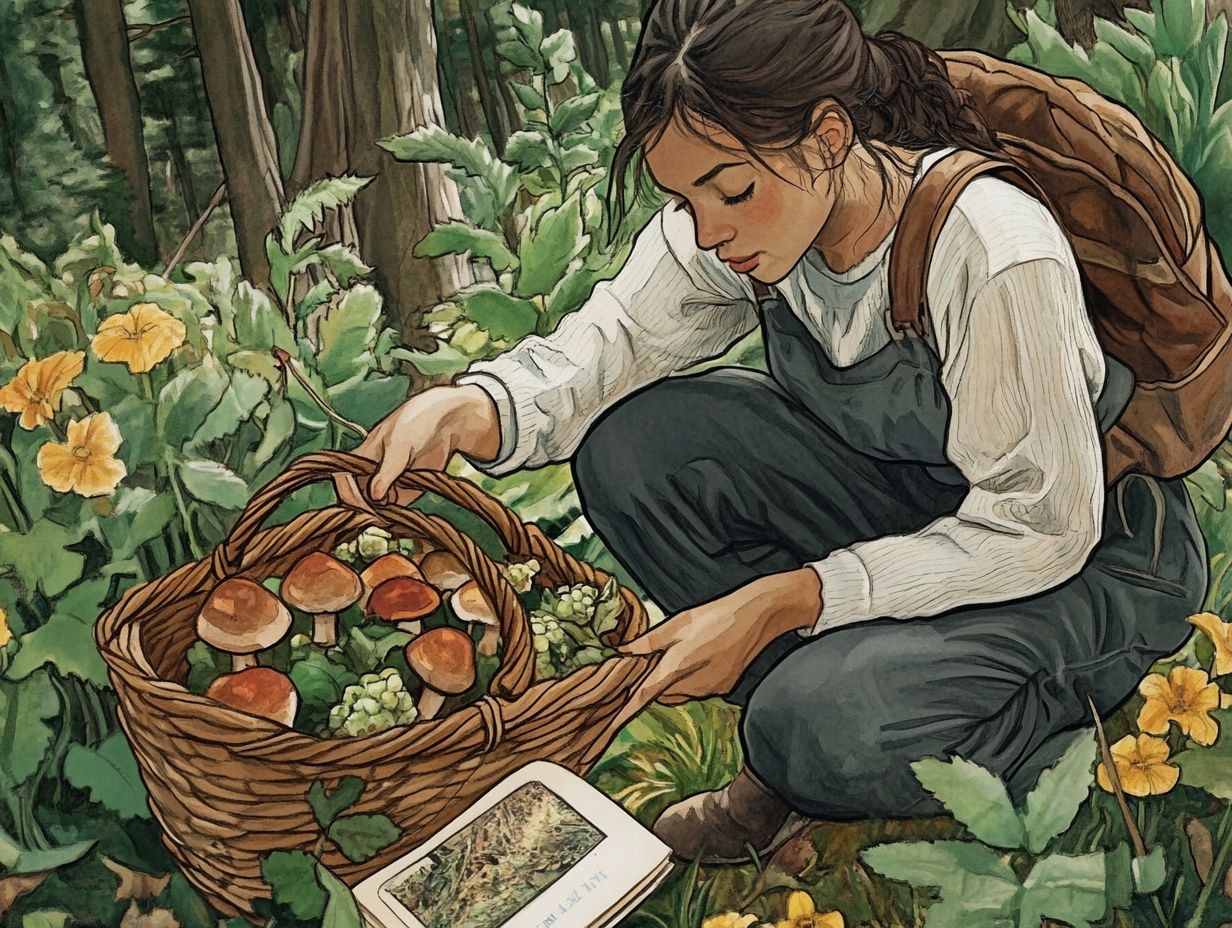
- Always research and follow legal guidelines before foraging.
- Identify common plant characteristics, such as shape and color, to help distinguish edible plants.
- Practice proper foraging safety precautions, such as wearing proper gear and avoiding potentially hazardous plants, such as poison ivy and oleander, while foraging.
The Basics of Foraging
Foraging is the art of seeking out and gathering wild foods, which includes a diverse array of edible plants, fruits, and herbs. Learning foraging techniques for wilderness survival can enhance your skills in identifying and collecting these natural resources.
This practice can deepen your connection to nature while offering sustainable food sources.
As a novice forager, it’s crucial to grasp the fundamentals of foraging. Start with the identification of local flora and learn what beginners should know about foraging, particularly the ability to discern between edible species and their toxic counterparts.
This foundational knowledge enhances your foraging adventures and supports eating locally sourced food.
What is Foraging?
Foraging is all about immersing yourself in nature and gathering wild foods, encompassing a diverse array of edible species from the local flora. To enhance your skills, consider learning how to develop your own foraging techniques.
This ancient practice is steeped in rich history, tracing back to your ancestors who relied on the earth s bounty for their survival. The cultural significance of foraging varies across regions; in some communities, seasonal gatherings celebrate the joy of sharing foraged treasures like mushrooms, berries, and greens.
Today, the renewed interest in foraging speaks to a broader appreciation for sustainable eating and the desire to reconnect with the natural world.
As you embark on these culinary adventures, you ll discover unique flavors while learning about the ecosystems that nurture these wild foods. Ultimately, you will cultivate a deeper respect for the environment.
Legal Considerations
Understanding the legal nuances of foraging is crucial for any enthusiast, as local laws can vary significantly and dictate where and what you can sustainably harvest.
Navigating these regulations is essential not only for compliance but also for safeguarding the environment and supporting local ecosystems.
You should be aware of the specific permits needed in certain regions, as some areas set boundaries for collection to protect native species.
Familiarizing yourself with protected areas will help you identify thriving habitats that are off-limits to harvesting.
Practicing ethical foraging means adhering to the principle of ‘leave no trace,’ minimizing your impact on nature, and sharing insights about sustainable harvesting with fellow enthusiasts.
By respecting these guidelines, you can relish the rewards of foraging while ensuring that these precious natural resources remain available for generations to come.
Essential Tools for Foraging
Equipping yourself with the right tools and gear is essential for a successful foraging adventure.
These essentials significantly enhance your ability to identify and safely gather wild foods from various environments, including the often-overlooked opportunities in urban foraging settings.
Recommended Gear and Equipment
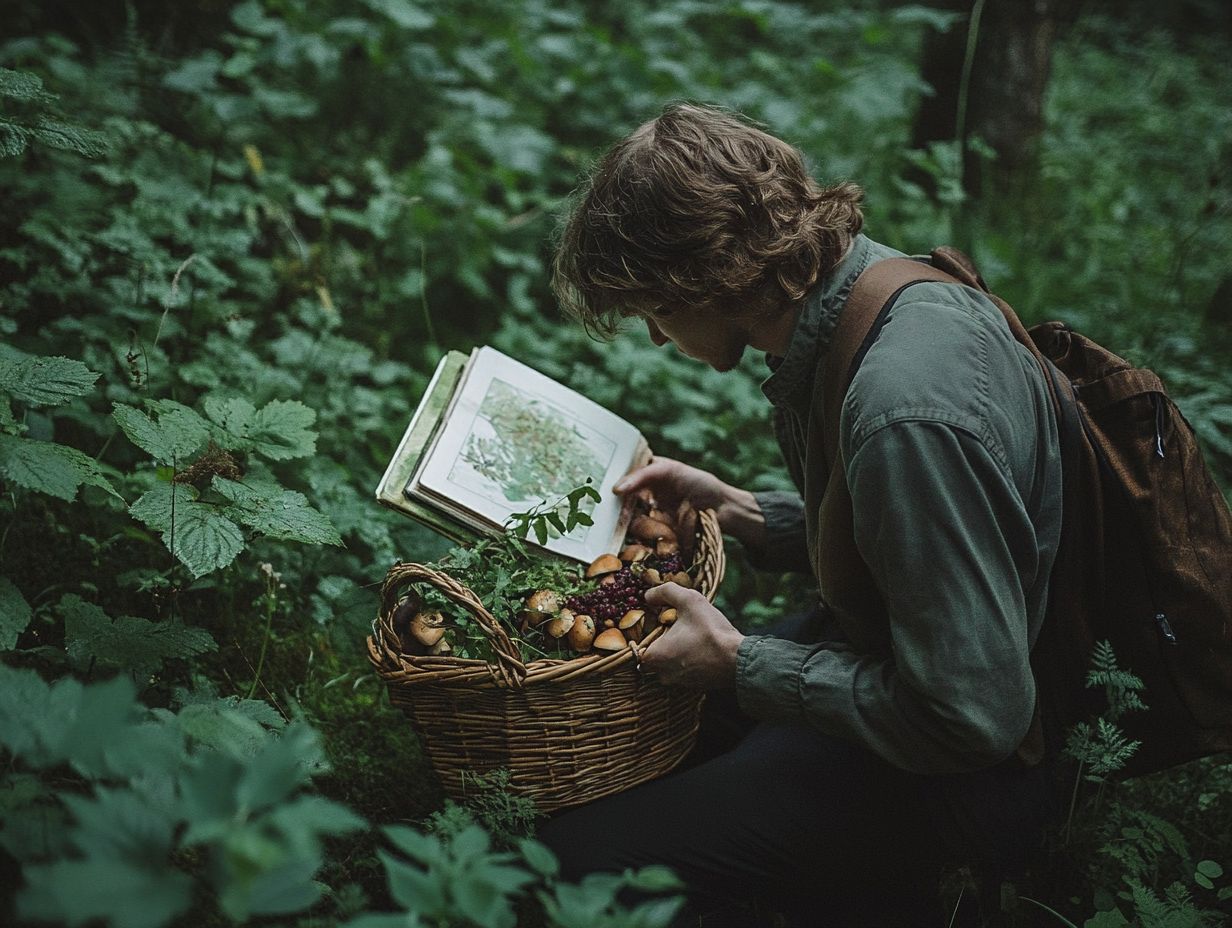
When you set out to forage, having the right gear is essential. Durable baskets for collecting edible plants and sharp knives for efficient harvesting are a must. Additionally, following top tips for successful foraging can enhance your experience and ensure safety.
A reliable pair of gloves will keep your hands safe from thorns and irritants. They are essential as you navigate various flora.
Consider investing in a sturdy set of field shears; they ll be invaluable for cutting through tougher plants or roots cleanly, minimizing damage to the surrounding vegetation.
Don t forget to carry a comprehensive field guide. It can truly elevate your experience by helping you distinguish between edible and non-edible options in the wild. This essential reference helps you learn about local plants and wildlife while avoiding potentially risky mistakes.
By equipping yourself with the right tools and resources, you create the foundation for a safe and enjoyable foraging adventure in national parks.
Identifying Wild Edible Plants
Mastering the art of identifying wild edible plants is an essential skill for any forager. It requires careful observation and a deep understanding of the unique characteristics that set edible species apart from their toxic relatives within the local flora.
Common Plant Characteristics to Look For
When foraging, it s crucial to recognize common plant characteristics that can help differentiate edible species from poisonous ones, such as prickly pear cactus. This ensures your foraging adventures are both safe and rewarding.
Having a keen eye for details like leaf shape, flower color, and growth patterns is essential. For example, those distinct heart-shaped leaves of violets, paired with their vibrant purple flowers, clearly signal that they’re safe to eat. On the other hand, the spiky leaves and bright red berries of pokeweed should raise immediate red flags.
Paying attention to growth patterns is just as important. Many safe plants, like wild garlic, flourish in moist environments, showcasing long, flat leaves and delightful white flower clusters. In contrast, belladonna, with its glossy leaves and bell-shaped flowers, cleverly conceals its toxicity.
By understanding these characteristics, you make foraging not only safer but also a richly enjoyable pursuit.
Safety Precautions while Foraging
Safety precautions are absolutely essential when foraging. Navigating potential hazards, such as poisonous plants or unsafe foraging practices, can greatly influence both your experience and your well-being.
Prioritizing safety allows you to enjoy the rewards of foraging and ensures that you gather safe ingredients while minimizing risks.
Potential Hazards and How to Avoid Them
Understanding the potential hazards you may encounter while foraging is crucial for ensuring your safety. Be mindful of poisonous plants like the death cap mushroom or oleander, as these can lead to serious health issues.
Beyond the risks posed by toxic flora, be aware of environmental dangers think slipping on wet ground, encountering sharp thorns, or even facing aggressive wildlife. To navigate these challenges, equip yourself with sturdy footwear and remain vigilant about your surroundings.
Familiarity with your environment can help you spot potentially hazardous areas. Having a reliable guidebook or app on hand can prevent the misidentification of edible plants and reinforce your plant identification skills.
Learning first aid for bites and stings is invaluable in handling any unforeseen emergencies that might arise during your foraging adventure and can aid in your understanding of foraging etiquette.
Foraging Tips for Beginners
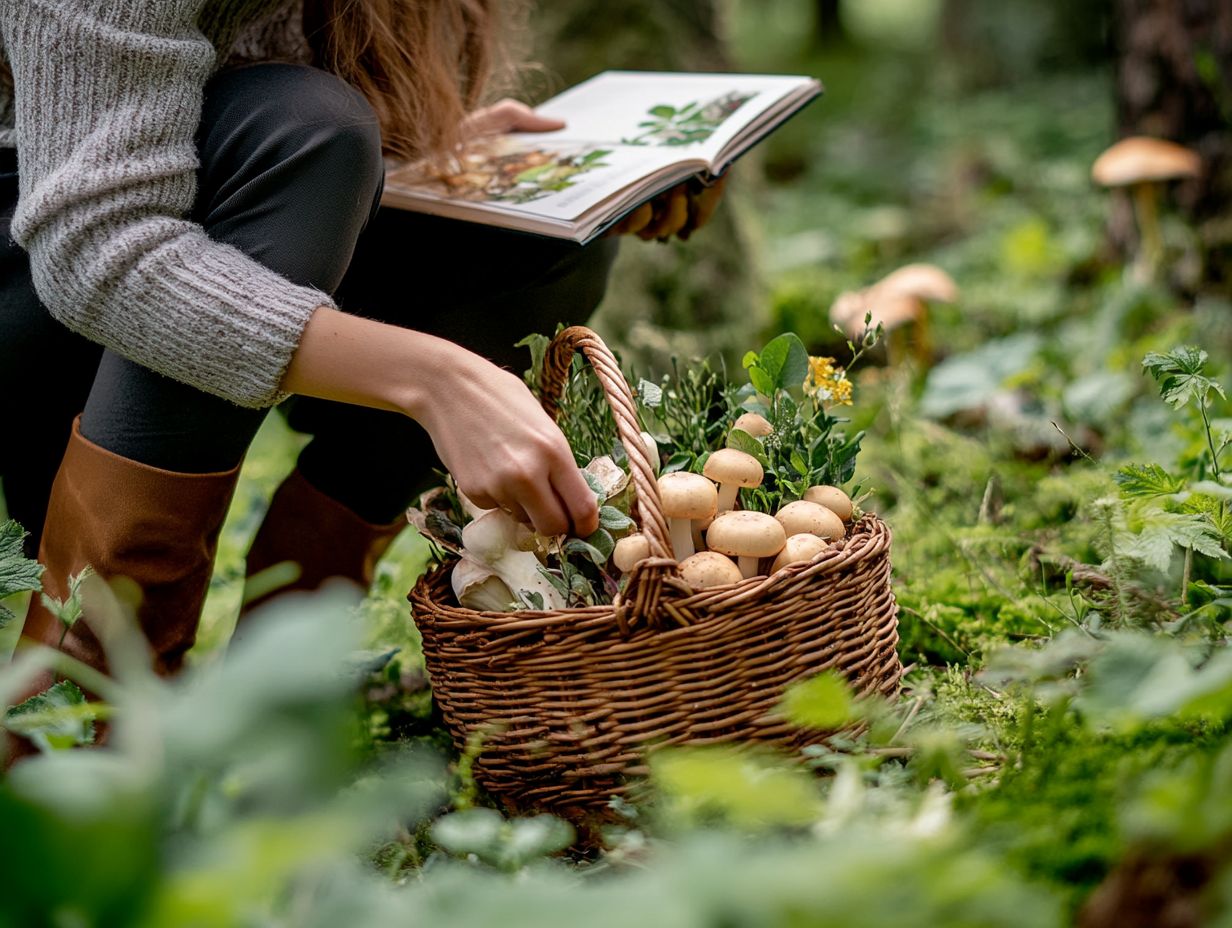
Stepping into the world of foraging is an exciting adventure filled with discovery! With some valuable tips and guidance from seasoned foragers, learning how to forage responsibly can transform this journey into a rewarding and enlightening experience.
Key Strategies for Success
Key strategies for successful foraging begin with thorough preparation. This includes learning top foraging techniques for beginners and understanding the seasonal availability of wild foods.
Engaging in local workshops or joining community foraging groups can significantly enhance your knowledge and build your confidence. By honing your skills in plant identification, you’ll be able to distinguish between edible and toxic species, which is crucial for safe gathering.
Familiarizing yourself with the surrounding ecosystem allows you to appreciate how plants and animals interact, ultimately leading to more sustainable foraging practices. As you immerse yourself in nature, you’ll cultivate a deeper respect for biodiversity and instinctively recognize the seasonal patterns that dictate the growth cycles of various wild edibles.
Best Practices for Sustainable Foraging
Embracing best practices for sustainable foraging gathering food in a way that keeps nature healthy is vital for ensuring that wild food sources flourish for generations to come. This commitment promotes responsible harvesting techniques and upholds foraging etiquette, allowing you to enjoy nature s bounty while preserving it for the future.
Responsible Harvesting and Preservation Techniques
Responsible harvesting and effective food preservation techniques are essential for enjoying the benefits of wild foods while safeguarding local ecosystems.
By employing methods such as drying, which removes moisture from edible plants and extends their shelf life, or utilizing canning to seal in nutrients and flavors, you can significantly contribute to sustainable foraging and ensure the longevity of your wild food supply.
Freezing is another excellent technique, allowing you to preserve seasonal harvests while maintaining their delightful taste and nutritional value. Knowing the best practices for these methods nurtures a respectful relationship with nature and fosters a sense of community among those who share your passion for wild foods.
By exchanging knowledge about responsible practices and innovative preservation techniques, you play a vital role in ensuring that future generations can also reap the rewards of their natural surroundings.
Frequently Asked Questions
How do I get started with foraging?
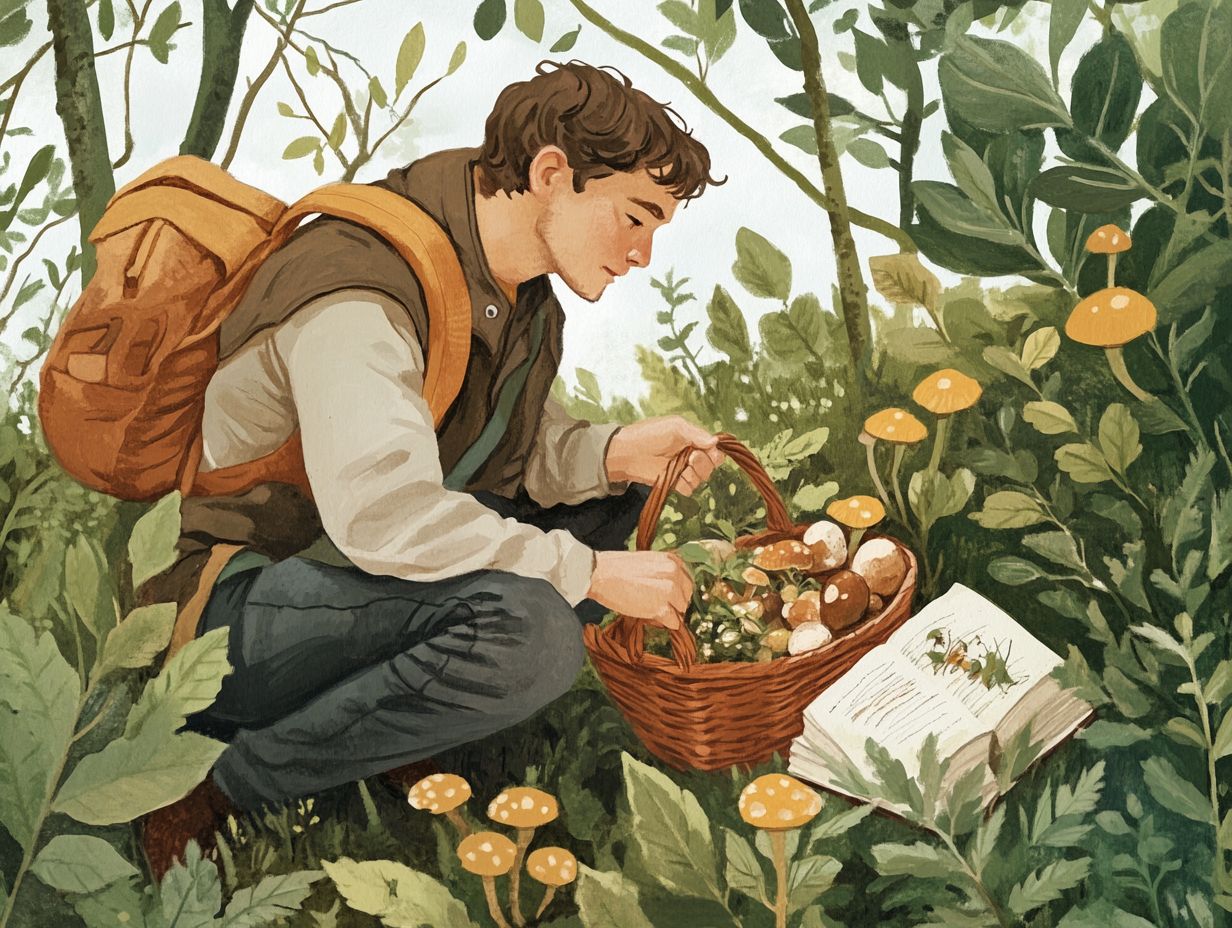
Start by diving into research and educating yourself on the local plants in your area. Identify a few common and safe plants that can be easily found, and consider joining a foraging group or taking a class that covers foraging techniques for children to learn from experienced foragers.
What are some key tips for safe foraging?
Always make sure to positively identify plants before consuming them. Avoid picking plants near roadsides, polluted areas, or places where pesticides may have been used. It’s also important to leave enough of the plant behind to ensure its survival and the ecosystem’s balance.
What are some common beginner mistakes in foraging?
One common mistake is picking plants without knowing their exact identification, which can lead to consuming toxic or poisonous plants. Another mistake is picking too much of a plant, harming its growth and impacting the local environment.
What are some tools I should have for foraging?
A good pair of gloves, a digging tool, and a basket or bag for collecting are all useful tools to have for foraging. It may also be helpful to have a guidebook or app to assist with plant identification.
Where are the best places to forage for beginners?
For beginners, it is recommended to start in open fields, parks, or forests with a variety of plant life. These areas tend to have a diverse range of edible and safe plants to forage, making them ideal for learning the art of foraging.
What are some important things to keep in mind while foraging?
Always respect the environment and follow ethical foraging practices. Be mindful of private property and obtain permission before foraging on someone else’s land. Also, be sure to properly dispose of any waste and only take what you need to avoid over-harvesting.
Ready to explore the wild? Grab your basket and start foraging today!

